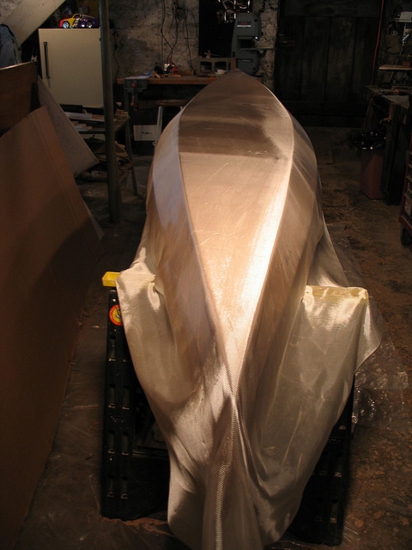Fiberglass is used in quite a few different modern industries, because of its durability, versatility and cost-effectiveness. As soon as fiberglass hardens, it’s very resilient to damage and can be easily repaired if damage does occur. Fiberglass is also easily mouldable, which allows one to shape into virtually any design. It also doesn’t corrode or rust, and therefore it typically lasts longer than metal or wood when consigned to a corrosive environment. Furthermore, it doesn’t react chemically with materials around it and it can’t conduct electricity. The process of manufacturing and repairing fibreglass products has advanced greatly over the years, and spray-coating systems have made fiberglass even simpler to work with than ever.
The Origins of Fiberglass: Fiberglass was traditionally manufactured by laying sheets down into a mould. A resin was then introduced and mixed with a hardener to bond the individual fiberglass-sheets together. It was crucial not let air in between the sheets, since the structural integrity of the whole piece would be in jeopardy. These sheets were then compressed/compacted to ensure that they stuck tightly together during the hardening process.

Fiberglass Spraying-Systems: The fiberglass spray-systems still necessitate a mould, since the mould gives the fiberglass piece its fundamental shape. In spite of this, rather than having a worker to apply the resin by hand – they can now use a spray system to swiftly coat each layer of fiberglass, and ensure a uniform application. The resin and the reinforced glass are sometimes applied through separate spray systems or they can be combined into a single spray nozzle. Other Filling materials, like foam or wood are sometimes also placed in between sheets, depending on what the fiberglass piece will be used for.
The advancement of fiberglass was mostly driven by the requirements of the automotive and boating industries. The automotive industry was looking for a more cost-effective alternative to steel. Furthermore – Boats are mostly made from fiberglass, since it’s very light and resistant to moisture. The fiberglass spray system made the manufacturing of fiberglass for both these purposes a lot faster and reasonable.
This has also greatly benefited the fiberglass repair process. Previously, it was quite difficult to fill small cracks with the required resin. Nowadays, a special spray nozzle attachment can be fitted so as to get the polymer resin exactly where needed, for the most reliable repair possible.
Modern Applications: Nowadays, fiberglass is used in far more things, other than cars and boats. Surfboards and certain bicycles, for instance, are now often made from fiberglass. With fiberglass – the options are limitless, since it can be moulded into any desired form.
Citations:
- Artist Attribution
Featured images:
- License: Creative Commons image source
This article was provided by tech expert, ScribeZA, for a top South African car accessory retailer who specialises in canopies for bakkies.










Comments